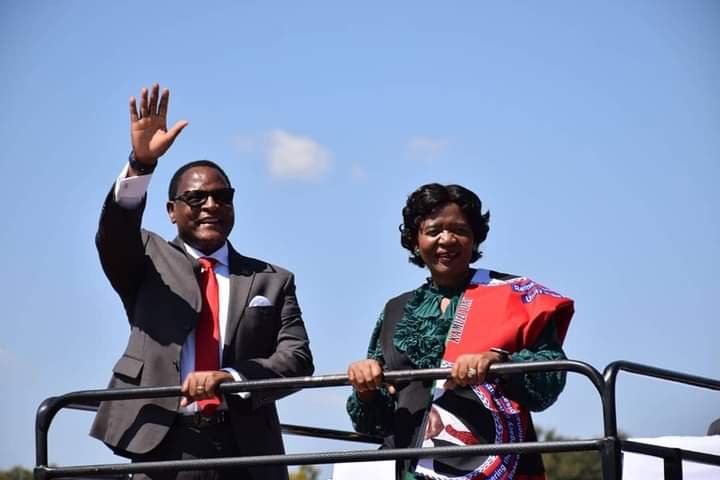By Chikumbutso Mtumodzi,Dowa
As Malawi commemorates 59 years of independence on Thursday, July 6, 2023, it is a perfect opportunity for Malawians to reflect on the journey that the country has travelled so far, and how the Malawi Congress Party (MCP) government under President Dr. Lazarus Chakwera fits into the sum total of our social and economic development since 1964.
The MCP belongs to the league of revolutionary political parties that fought for independence in countries across Southern Africa such as the South West Africa People’s Organisation or SWAPO in Namibia; and the Zimbabwe African National Union – Patriotic Front (ZANU–PF) in Zimbabwe.
In South Africa, there is the African National Congress (ANC); the Kenya African National Union (KANU) in Kenya; the United National Independence Party (UNIP) of Kenneth David Kaunda in Zambia, and the Chama Cha Mapinduzi (CCM) of Julius Kambarage Nyerere in Tanzania.

These are the political parties whose indelible imprint on the face of liberation history in countries across Southern and Eastern Africa will be difficult to erase for many years to come. They played a key role in the liberation struggle from colonial imperialism.
Apart from just liberating their countries, these political parties also heralded a new path of sociopolitical drift in their countries towards economic development that has largely been a mixed bag of success as well as failure.
In Malawi, the accolade of being the first and only liberating political party goes to the MCP. And that legacy will stick with us for many more years to come. It was Dr. Hastings Kamuzu Banda alongside some liberation heroes such as Kanyama Chiume, Orton Chirwa, Henry Masauko Chipembere, Yatuta Chisiza, Dunduzu Chisiza and others that fought a gallant fight against British colonial dominance in the 1950s and 60s.
It was also the MCP and Kamuzu who took Malawians on the first genuine social and economic development path after independence. To date, the party’s development footprint is still visible. In fact, most of this country’s telling and landmark infrastructure is the handwork of Kamuzu and his MCP. We ought to just give it to them.
Since the advent of multiparty democracy in this country, Malawi’s social economic progression has been that of three steps forward and five steps backwards. Under the tutelage of the International Monetary Fund (IMF), Malawi adopted wholesale Structure Adjustment Programs under former President, Bakili Muluzi, apparently to devolve more economic control to the private sector, and kick-start rapid economic development.
The SAPs saw most state owned companies such as the Malawi Development Corporation (MDC); David Whitehead and Sons (DWS); Brown & Clappton, and others being sold to private sector players for a song. We later realized that this was hardly the economic panacea that Malawi needed.
Thousands of people were thrown out of employment; the Malawian Kwacha lost massive value amid high taxes and runaway inflation; and corruption became endemic thereby stifling the little gains that may had been made.
Efforts by successive governments to bring about an economic revolution to the Malawian economy on a constant life support have been sparsely, and at the most, negligible to make any significant dent at the jaws of poverty.
Ironically, over 25 years after the change of government to multiparty rule, Malawians decided to hand power back to MCP through the leadership of President Dr. Lazarus Chakwera, who became Malawi’s President after the 2020 presidential election re-run. This was a classical case of ‘let the one who started finish it’. And true to this adage, Dr Lazarus Chakwera did not waste time but get down to work.
Despite facing a triple-whammy of catastrophies like the Covid 19 pandemic; the war in Ukraine and a slumping global economy, the Chakwera government quickly announced a series of measures to cushion Malawi’s economy against external shocks as well as to inject enough gas to put it on a growth path. The measures included spending cuts through stringent fiscal measures to bring about spending discipline in government and departments. In November 2021, President Lazarus Chakwera launched the Malawi Vision 2063, a development blueprint designed to guide Malawi’s development agenda in the short, medium to long term. The objective is to make Malawi a middle income country by 2030, and a full blown economy by 2063.
As we are talking, Malawi is currently almost a construction site with various construction projects sprouting variously from high and low. Currently, negotiations are at an advanced stage for government to qualify for an Extended Credit Facility (ECF) with the IMF, a development, which is expected to help stabilize the economy by among other things making forex readily available.
In the larger scheme of things, it appears it is once again the MCP government through current President Dr. Lazarus Chakwera that are genuinely destined to bring about real and practical social and economic development to Malawi through an empowering vision heralded by Malawi’s founding President, Kamuzu.
It is thus befitting that as Malawi celebrates its 59 years of independence, Malawians must also use the space to reflect on the role that the first revolutionary political party in this country – MCP – played in the total social and economic development of the country.
They say time is the best judge of everything and it seems time has judged that MCP and President Dr. Lazarus Chakwera must continue to guide this country on a social and economic development path in a faithful and time honored quest to uplift the masses out of poverty.
*The author is writing in his personal capacity*


